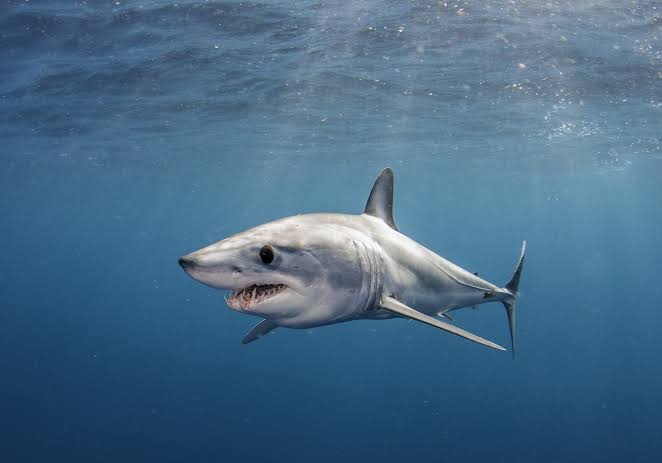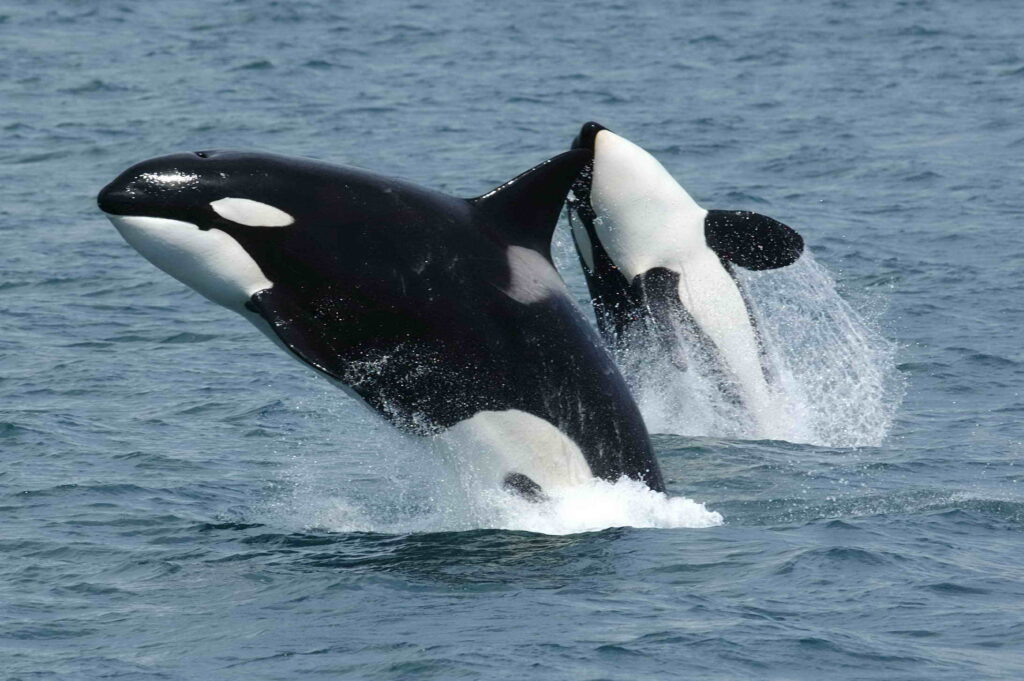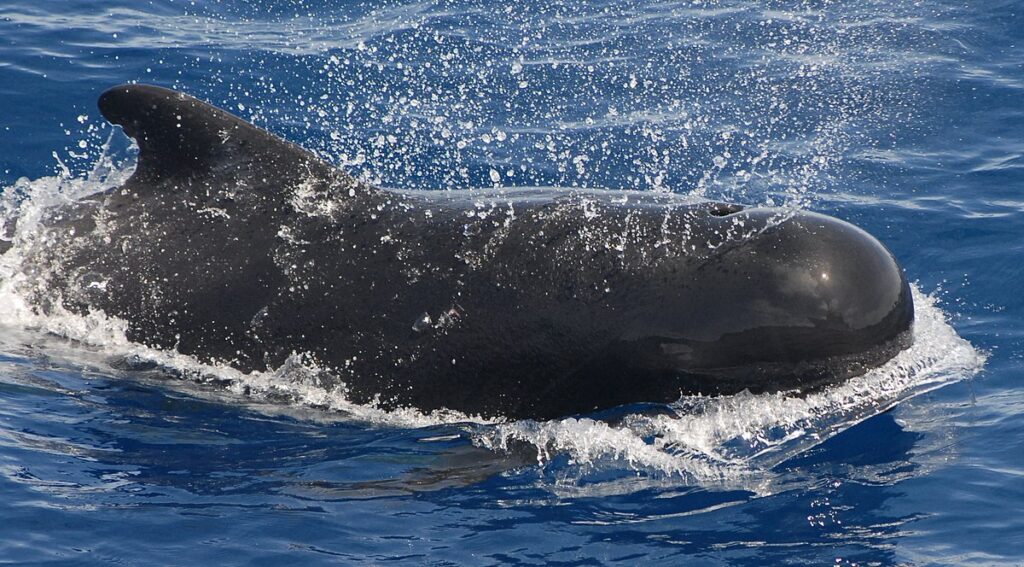The ocean is home to a wide array of incredible creatures, many of which are built for speed. From agile fish to swift mammals, these animals have adapted to their aquatic environment in fascinating ways. Here’s a look at the top 10 fastest sea animals that will leave you in awe of their speed and agility.
1. Black Marlin (Istiompax indica)
The Black Marlin (Istiompax indica) is one of the most impressive and fastest fish in the ocean, renowned for its incredible speed and strength. Here are some key details about this magnificent species:
Overview
- Speed: Up to 82 mph (132 km/h)
- Habitat: Black marlins are primarily found in the tropical and subtropical waters of the Indian and Pacific Oceans. They prefer warmer waters and often inhabit areas near reefs and continental shelves.
Physical Characteristics
- Appearance: The black marlin is easily identifiable by its elongated body, pointed snout, and large dorsal fin. They have a dark blue or black coloration on the top, with silver or white on the underside.
- Size: They can grow to impressive lengths, with some individuals exceeding 14 feet (4.3 meters) and weighing over 1,500 pounds (680 kg).
Behavior
- Predatory Skills: Black marlins are highly efficient predators, feeding primarily on smaller fish, squid, and other marine creatures. Their speed and agility help them catch prey and evade larger predators.
- Jumping Ability: Known for their acrobatic displays, black marlins can leap out of the water, performing spectacular aerial flips. This behavior is not only a sight to behold but also a tactic to shake off hooks or predators.
Importance in Sport Fishing
- Sport Fishing: The black marlin is highly sought after by sport fishermen due to its size, speed, and the challenge it presents when hooked. Catching a black marlin is considered a significant achievement in the sport fishing community.
- Conservation Status: While not currently endangered, black marlin populations are monitored to ensure sustainable fishing practices. Overfishing and habitat loss can impact their numbers, making responsible fishing crucial.

2. Sailfish (Istiophorus platypterus)
The Sailfish (Istiophorus platypterus) is renowned as one of the fastest fish in the ocean, making it a true marvel of the marine world. Here’s a closer look at this incredible species:
Overview
- Speed: Up to 68 mph (110 km/h)
- Habitat: Sailfish inhabit warm ocean waters, primarily found in the Atlantic and Pacific Oceans. They prefer areas near the surface and often associate with oceanic structures like reefs and currents.
Physical Characteristics
- Appearance: Sailfish are easily recognizable by their long, slender bodies and distinctive sail-like dorsal fin, which can be raised or lowered. They typically exhibit a blue to dark blue coloration on their upper body, with silvery sides and a characteristic bill.
- Size: Sailfish can grow to lengths of about 10 feet (3 meters) and weigh up to 200 pounds (90 kg), although most are smaller.
Behavior
- Hunting Skills: Sailfish are apex predators, primarily feeding on smaller fish like sardines and mackerel. They use their speed and agility to chase down prey and can often be seen breaching the water while hunting.
- Sail Function: The sail-like dorsal fin is not just for show; it helps stabilize the fish during high-speed pursuits and can also be raised to intimidate prey or rivals.
Reproduction
- Spawning: Sailfish spawn in open waters, often in large groups. Females can release millions of eggs, which float freely in the water column, where they are fertilized by males.
Importance in Sport Fishing
- Sport Fishing: Highly prized by anglers, the sailfish is often sought after for its speed and acrobatic fighting style when hooked. Catch-and-release practices are encouraged to maintain healthy populations.
- Conservation Status: While sailfish populations are generally considered stable, they can be vulnerable to overfishing and habitat degradation. Sustainable fishing practices are essential to ensure their continued abundance.

3. Swordfish (Xiphias gladius)
The Swordfish (Xiphias gladius) is a remarkable and formidable fish known for its impressive speed and unique physical characteristics. Here’s a closer look at this fascinating species:
Overview
- Speed: Up to 60 mph (97 km/h)
- Habitat: Swordfish are found in warm and temperate waters around the world, including the Atlantic, Pacific, and Indian Oceans. They prefer the open ocean, often migrating to deeper waters during the day and coming closer to the surface at night to feed.
Physical Characteristics
- Appearance: Swordfish are easily recognizable by their long, flattened bills that resemble swords. This distinctive feature is used to slash through schools of fish and for defense against predators. Their bodies are streamlined, allowing for swift movement through the water.
- Size: They can grow to impressive lengths, typically reaching about 10 feet (3 meters) and weighing over 1,000 pounds (450 kg) in some cases.
Behavior
- Feeding Habits: Swordfish are predatory fish that primarily feed on squid, mackerel, and other smaller fish. Their speed and agility enable them to catch prey efficiently. They often use their bills to stun or injure prey before consuming them.
- Nighttime Activity: Swordfish are primarily nocturnal hunters, coming closer to the surface at night when their prey is more active. During the day, they dive to deeper waters to rest.
Reproduction
- Spawning: Swordfish engage in a unique reproductive strategy, releasing their eggs in open water. Females can produce millions of eggs during spawning, which float freely in the ocean and are fertilized by males.
Importance in Fisheries
- Commercial Fishing: Swordfish are highly sought after in commercial and recreational fishing due to their size and taste. They are prized for their firm, meaty flesh, making them a popular choice in restaurants and seafood markets.
- Conservation Status: While swordfish populations have faced pressure from overfishing, conservation efforts have been implemented to ensure sustainable fishing practices. Regulatory measures help manage their populations and protect their habitats.

4. Yellowfin Tuna (Thunnus albacares)
The Yellowfin Tuna (Thunnus albacares) is a highly sought-after fish known for its speed, agility, and culinary value. As one of the most popular species in commercial and sport fishing, the yellowfin tuna plays a vital role in both the ocean ecosystem and the fishing industry. Here’s an overview of this remarkable species:
Overview
- Speed: Up to 50 mph (80 km/h)
- Habitat: Yellowfin tuna are found in tropical and subtropical oceans worldwide, including the Atlantic, Pacific, and Indian Oceans. They prefer warm waters and are often found near the surface, where they can chase schools of smaller fish.
Physical Characteristics
- Appearance: Yellowfin tuna are characterized by their streamlined bodies, with a metallic blue or dark blue dorsal area, silver sides, and bright yellow finlets and tail. Their distinct coloration and large size make them easily recognizable.
- Size: They can grow to impressive sizes, typically reaching lengths of about 6 feet (1.8 meters) and weighing up to 400 pounds (180 kg), although some individuals may be larger.
Behavior
- Feeding Habits: Yellowfin tuna are opportunistic feeders, primarily consuming smaller fish such as sardines, mackerel, and squid. They are known for their incredible speed and agility, allowing them to capture prey efficiently.
- Social Structure: These fish are often found in schools, sometimes mixed with other tuna species. They may also associate with dolphins and other larger fish, which can help them locate prey.
Reproduction
- Spawning: Yellowfin tuna have a unique spawning strategy, releasing millions of eggs in open water. Spawning typically occurs in warmer waters, where the eggs can float freely and develop in the ocean.
Importance in Fisheries
- Commercial Fishing: Yellowfin tuna is highly valued in the fishing industry, both for its meat and for its role in sushi and sashimi dishes. It is one of the most commercially important tuna species worldwide.
- Sport Fishing: Anglers also prize yellowfin tuna for their fighting ability and speed, making them a popular target for sport fishing. Catch-and-release practices are encouraged to ensure sustainable populations.
Conservation Status
- Population Management: While yellowfin tuna populations are generally stable, they can be vulnerable to overfishing and habitat loss. Sustainable fishing practices and regulations are essential to maintain healthy populations and protect their habitats.

5. Shortfin Mako Shark (Isurus oxyrinchus)
The Shortfin Mako Shark (Isurus oxyrinchus) is renowned for its remarkable speed and agility, making it one of the fastest sharks in the ocean. Here’s a closer look at this fascinating species:
Overview
- Speed: Up to 60 mph (97 km/h)
- Habitat: Shortfin mako sharks are found in both temperate and tropical waters worldwide, typically preferring the open ocean but can occasionally be found near coastal areas.
Physical Characteristics
- Appearance: Shortfin mako sharks have a streamlined body with a pointed snout and long, slender pectoral fins. Their coloration is usually a deep blue or gray on the top with a white underside, which helps camouflage them in the water.
- Size: They can grow up to 12 feet (3.7 meters) in length and weigh as much as 1,200 pounds (540 kg), although most individuals are smaller.
Behavior
- Feeding Habits: Shortfin makos are apex predators, feeding primarily on fish such as tuna, mackerel, and squid. Their speed and sharp teeth enable them to catch fast-moving prey effectively.
- Hunting Technique: They are known for their acrobatic behavior, often leaping out of the water in pursuit of prey or when hooked, making them a thrilling catch for sport fishermen.
Reproduction
- Reproductive Strategy: Shortfin mako sharks are ovoviviparous, meaning they give birth to live young. Females typically have a gestation period of about 15 to 18 months, producing litters of 4 to 25 pups.
Importance in Fisheries
- Sport Fishing: Due to their speed and fighting ability, shortfin mako sharks are highly sought after by sport fishermen. They are known for their acrobatic jumps and powerful runs when hooked.
- Commercial Fishing: Shortfin makos are also targeted in commercial fisheries for their meat and fins, which are used in various culinary dishes and for shark fin soup.
Conservation Status
- Population Concerns: The shortfin mako shark faces threats from overfishing and habitat loss. Conservation efforts are in place to manage their populations and protect their habitats, as they are classified as vulnerable by the International Union for Conservation of Nature (IUCN).

6. Atlantic Bluefin Tuna (Thunnus thynnus)
The Atlantic Bluefin Tuna (Thunnus thynnus) is one of the largest and most iconic fish in the ocean, known for its immense size, speed, and culinary value. Here’s a detailed look at this fascinating species:
Overview
- Speed: Up to 43 mph (70 km/h)
- Habitat: Atlantic bluefin tuna are found in the North Atlantic Ocean, ranging from the Gulf of Mexico to the Mediterranean Sea. They prefer warm waters but can also be found in cooler areas, often migrating long distances for spawning and feeding.
Physical Characteristics
- Appearance: Atlantic bluefin tunas have a robust, torpedo-shaped body with a distinctive blue-black upper body and silver sides. They feature large pectoral fins and a characteristic yellow stripe along the dorsal and anal fins.
- Size: They are among the largest tuna species, reaching lengths of up to 10 feet (3 meters) and weights of over 1,500 pounds (680 kg). Some exceptional individuals can weigh even more.
Behavior
- Feeding Habits: Bluefin tuna are apex predators, feeding primarily on smaller fish, squid, and crustaceans. Their speed and powerful swimming ability enable them to catch fast-moving prey efficiently.
- Social Structure: They are often found in schools, particularly during feeding and spawning periods. Bluefin tuna are known for their migratory behavior, traveling vast distances between feeding and spawning grounds.
Reproduction
- Spawning: Atlantic bluefin tuna spawn in warm waters, typically from April to July. Females can release millions of eggs during a single spawning event, which float freely in the ocean, where fertilization occurs.
Importance in Fisheries
- Commercial Fishing: The Atlantic bluefin tuna is highly valued in commercial fisheries, particularly in the sushi and sashimi markets. Its rich flavor and high fat content make it a prized delicacy, driving significant demand.
- Sport Fishing: Bluefin tuna are also popular among sport fishermen due to their size and challenging fight when hooked. Catch-and-release practices are encouraged to help conserve their populations.
Conservation Status
- Population Concerns: The Atlantic bluefin tuna has faced significant threats from overfishing and habitat degradation, leading to declines in their populations. Conservation measures, including fishing quotas and protected areas, are in place to help recover their numbers. The species is currently listed as endangered by the International Union for Conservation of Nature (IUCN).

7. Dolphin (Delphinidae family)
The Dolphin belongs to the Delphinidae family, which encompasses a diverse group of marine mammals known for their intelligence, agility, and social behavior. Here’s an overview of these fascinating creatures:
Overview
- Species Diversity: The Delphinidae family includes over 30 species of dolphins, with the most well-known being the common bottlenose dolphin (Tursiops truncatus).
- Habitat: Dolphins inhabit oceans and seas worldwide, with some species also found in freshwater rivers. They thrive in both coastal and open ocean environments.
Physical Characteristics
- Appearance: Dolphins have a streamlined body adapted for fast swimming, with a pronounced beak and a dorsal fin. Their skin is typically smooth and can range in color from gray to blue, often with lighter underbellies.
- Size: Dolphin sizes vary significantly among species, ranging from about 5 feet (1.5 meters) for smaller species like the spinner dolphin to over 30 feet (9 meters) for larger species like the orca, or killer whale (Orcinus orca).
Behavior
- Social Structure: Dolphins are highly social animals, often found in pods that can range from a few individuals to several hundred. They exhibit strong social bonds and often work together for hunting and protection.
- Communication: They communicate using a variety of vocalizations, including clicks, whistles, and body language. Their sophisticated communication skills contribute to their ability to coordinate during hunts and socialize within pods.
Feeding Habits
- Diet: Dolphins are carnivorous, primarily feeding on fish, squid, and crustaceans. Their hunting techniques can vary by species, with some using echolocation to locate prey in murky waters.
Reproduction
- Breeding: Female dolphins typically give birth to a single calf after a gestation period that varies by species, usually lasting about 12 months. Mothers are known to be nurturing, providing care and protection for their young.
Importance in Ecosystems
- Ecological Role: As apex predators, dolphins play a crucial role in maintaining healthy marine ecosystems. They help regulate fish populations and contribute to the overall balance of marine life.
Conservation Status
- Threats: Many dolphin species face threats from habitat loss, pollution, entanglement in fishing gear, and hunting. Conservation efforts, including marine protected areas and regulations against hunting, are essential to ensure their survival.

8. Common Dolphin (Delphinus delphis)
The Common Dolphin (Delphinus delphis) is a widely recognized and charismatic marine mammal known for its playful behavior and social nature. Here’s an in-depth look at this fascinating species:
Overview
- Habitat: Common dolphins inhabit warm and temperate seas worldwide, including both coastal and open ocean environments. They are often seen in large groups and are known to migrate with their prey.
Physical Characteristics
- Appearance: Common dolphins have a streamlined body, a prominent beak, and a distinctive color pattern. Their skin is typically a mix of gray and yellowish or light brown, with a characteristic hourglass pattern on each side, which varies by population.
- Size: They typically reach lengths of about 6.5 to 8.5 feet (2 to 2.6 meters) and weigh between 150 to 500 pounds (68 to 227 kg), depending on the specific population.
Behavior
- Social Structure: Common dolphins are highly social animals, often found in pods ranging from a few individuals to several hundred. They engage in cooperative hunting and are known to exhibit complex social interactions.
- Playfulness: Known for their acrobatic displays, common dolphins frequently leap, spin, and surf on waves created by boats. Their playful behavior is a hallmark of their personality and contributes to their popularity among whale watchers.
Feeding Habits
- Diet: Common dolphins primarily feed on small fish, squid, and crustaceans. They employ various hunting strategies, including coordinated group hunting to herd prey into tight balls, making it easier to catch.
Reproduction
- Breeding: Female common dolphins typically give birth to a single calf after a gestation period of about 11 months. Calves are nursed for several months and often stay with their mothers for several years, learning essential survival skills.
Conservation Status
- Population Trends: While common dolphins are widespread, they face threats from habitat degradation, pollution, and entanglement in fishing gear. Certain populations have experienced declines, prompting conservation efforts to monitor and protect their habitats.
- Protection Measures: International agreements and regulations have been established to ensure sustainable fishing practices and protect common dolphin populations from overfishing and bycatch.

9. Orca (Orcinus orca)
The Orca (Orcinus orca), also known as the killer whale, is one of the most recognizable and complex marine mammals in the world. Renowned for their intelligence, social structures, and striking appearance, orcas are apex predators in the ocean. Here’s a comprehensive look at this fascinating species:
Overview
- Habitat: Orcas are found in oceans worldwide, from polar regions to tropical seas. They inhabit a range of marine environments, including coastal areas, open ocean, and even some rivers.
- Social Structure: They live in family groups called pods, which typically consist of matriarchal females, their offspring, and sometimes other related individuals. These pods can range from a few to over 30 or more members.
Physical Characteristics
- Appearance: Orcas are easily identifiable by their distinctive black and white coloration. They have a robust body, a tall dorsal fin that can reach up to 6 feet (1.8 meters) in males, and a white patch above and behind the eye.
- Size: Adult male orcas can grow up to 20-26 feet (6-8 meters) long and weigh between 8,000 to 12,000 pounds (3,600 to 5,400 kg). Females are typically smaller, measuring 16-23 feet (5-7 meters) in length and weighing 3,000 to 8,000 pounds (1,400 to 3,600 kg).
Behavior
- Intelligence: Orcas are highly intelligent, known for their advanced hunting techniques, complex vocalizations, and social interactions. They communicate using a range of clicks, whistles, and body language.
- Hunting Strategies: As apex predators, orcas have diverse diets that can include fish, squid, and marine mammals such as seals, sea lions, and even other whales. They often use sophisticated cooperative hunting techniques, demonstrating problem-solving abilities and teamwork.
Reproduction
- Breeding: Female orcas typically give birth to a single calf after a gestation period of about 15-18 months. Calves are born tail-first and are nursed for up to two years. Social bonds between mothers and calves are strong and last a lifetime.
Conservation Status
- Population Threats: Orcas face threats from habitat degradation, pollution, declining prey availability, and entanglement in fishing gear. Some populations, such as the Southern Resident Killer Whales in the Pacific Northwest, are critically endangered due to these pressures.
- Protection Efforts: Various conservation organizations and government agencies work to protect orca habitats and populations through regulations, research, and public awareness campaigns.
Cultural Significance
- Symbolism: Orcas hold significant cultural value for many Indigenous peoples along the Pacific coast, often representing strength, family, and community. They are also popular in marine parks and aquariums, although this has raised ethical concerns regarding their captivity and welfare.

10. Pilot Whale (Globicephala)
The Pilot Whale is a common name for two species of marine mammals belonging to the genus Globicephala: the short-finned pilot whale (Globicephala macrorhynchus) and the long-finned pilot whale (Globicephala melas). Known for their strong social bonds and striking appearance, pilot whales are fascinating creatures of the ocean. Here’s an overview of these remarkable species:
Overview
- Habitat: Pilot whales are found in deep offshore waters of both temperate and tropical oceans worldwide. They prefer deeper waters but can also be seen near coastal regions, particularly during feeding.
Physical Characteristics
- Appearance: Pilot whales have robust, streamlined bodies with large heads and a characteristic rounded forehead. Their skin is typically dark gray or black, and they may have lighter patches or scars.
- Size:
- Short-finned Pilot Whale: Adults can grow up to 20 feet (6 meters) in length and weigh between 1,000 to 2,300 pounds (450 to 1,050 kg).
- Long-finned Pilot Whale: They are slightly larger, reaching lengths of up to 24 feet (7.3 meters) and weights of 1,500 to 3,000 pounds (680 to 1,360 kg).
Behavior
- Social Structure: Pilot whales are highly social animals, often found in groups known as pods, which can consist of a few individuals to several hundred. These pods are usually matrilineal, with strong family bonds that can last a lifetime.
- Communication: They communicate using a variety of vocalizations, including clicks, whistles, and echolocation, which help them navigate and hunt in deep waters.
Feeding Habits
- Diet: Pilot whales primarily feed on squid, fish, and other marine organisms. They are known for their deep-diving abilities, often diving to depths of 1,500 feet (460 meters) or more in search of prey.
- Hunting Techniques: They often hunt cooperatively, using echolocation to locate prey and coordinating their efforts to maximize their hunting success.
Reproduction
- Breeding: Female pilot whales typically give birth to a single calf after a gestation period of about 11-12 months. Calves are born tail-first and are nursed for up to two years, during which they learn vital survival skills from their mothers.
Conservation Status
- Threats: Pilot whales face various threats, including habitat degradation, pollution, and bycatch in fishing gear. They are also vulnerable to mass strandings, often due to environmental factors or changes in prey availability.
- Protection Efforts: Conservation organizations and regulatory bodies monitor pilot whale populations and work to mitigate threats through various conservation measures, including fishing regulations and habitat protection.
Cultural Significance
- Cultural Perception: In some cultures, pilot whales have been traditionally hunted for food, leading to debates about conservation and sustainable practices. In other regions, they are admired for their intelligence and social behavior, contributing to marine ecotourism.


